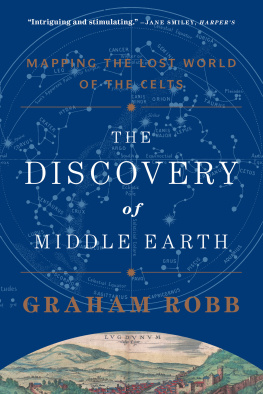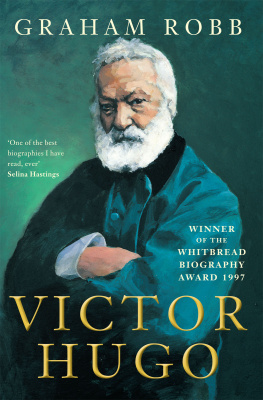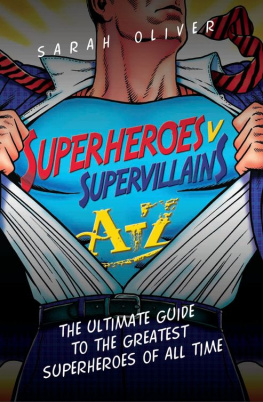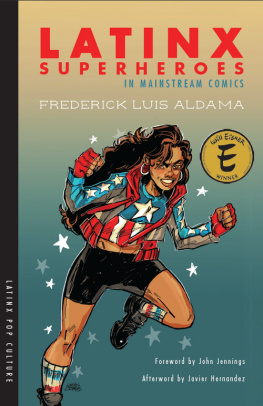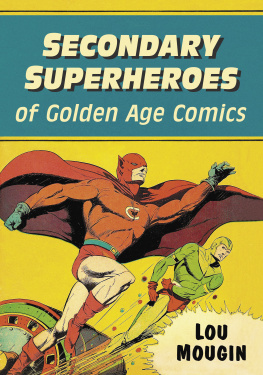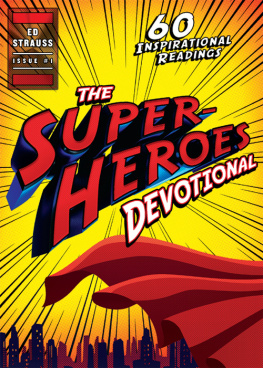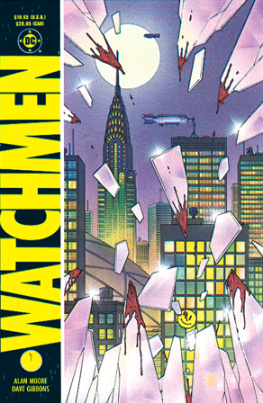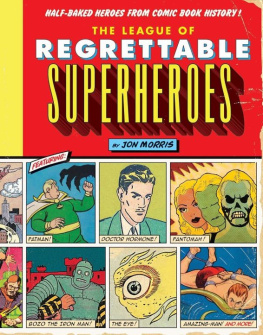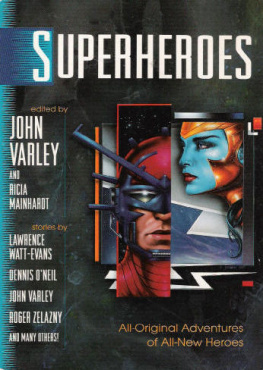Brian J. Robb is the New York Times and Sunday Times best-selling biographer of Leonardo DiCaprio, Johnny Depp, and Brad Pitt. Hes also written acclaimed pop culture books on silent cinema, the films of Philip K. Dick, Wes Craven, Laurel and Hardy, and the TV series Doctor Who and Star Trek. He is co-editor of the popular website Sci-Fi Bulletin and lives in Edinburgh.
Recent titles in the series
A Brief Guide to James Bond
Nigel Cawthorne
A Brief Guide to Star Wars
Brian J. Robb
A Brief Guide to Private Life in Britains Stately Homes
Michael Paterson
A Brief Guide to Native American Myths and Legends
Lewis Spence
A Brief Guide to Jane Austen
Charles Jennings
A Brief Guide to J. R. R. Tolkien
Nigel Cawthorne
A Brief History of the Spy
Paul Simpson
A Brief History of the Roman Empire
Stephen P. Kershaw
A Brief Guide to Jeeves and Wooster
Nigel Cawthorne
A Brief History of the House of Windsor
Michael Paterson
A Brief Guide to Ghost Hunting
Dr Leo Ruickbie
A Brief Guide to C. S. Lewis
Paul Simpson
A Brief Guide to Celtic Myths and Legends
Martyn Whittock
A Brief Guide to Oz
Paul Simpson
A Brief Guide to Stephen King
Paul Simpson
A BRIEF HISTORY OF
SUPERHEROES
Brian J. Robb

For Jerry and Joe and Stan and Jack
The true superheroes of comic book history
Constable & Robinson Ltd
5556 Russell Square
London WC1B 4HP
www.constablerobinson.com
First published in the UK by Robinson,
An imprint of Constable & Robinson, 2014
Copyright Brian J. Robb 2014
The right of Brian J. Robb to be identified as the author of this work has been asserted by him in accordance with the Copyright, Designs and Patents Act 1988
All rights reserved. This book is sold subject to the condition that it shall not be reproduced in whole or in part, in any form or by any means, electronic or mechanical, including photocopying, recording, or by any information storage and retrieval system now known or hereafter invented, without written permission from the publisher and without a similar condition, including this condition, being imposed on the subsequent purchaser.
A copy of the British Library Cataloguing in
Publication data is available from the British Library
ISBN 978-1-47211-055-8 (paperback)
ISBN 978-1-47211-070-1 (ebook)
1 3 5 7 9 10 8 6 4 2
First published in the United States in 2014 by Running Press Book Publishers, A Member of the Perseus Books Group
All rights reserved under the Pan-American and International Copyright Conventions
This book may not be reproduced in whole or in part, in any form or by any means, electronic or mechanical, including photocopying, recording, or by any information storage and retrieval system now known or hereafter invented, without written permission from the publisher.
Books published by Running Press are available at special discounts for bulk purchases in the United States by corporations, institutions, and other organizations. For more information, please contact the Special Markets Department at the Perseus Books Group, 2300 Chestnut Street, Suite 200, Philadelphia, PA 19103, or call (800) 810-4145, ext. 5000, or email .
US ISBN: 978-0-7624-5231-6
US Library of Congress Control Number: 2013954852
9 8 7 6 5 4 3 2 1
Digit on the right indicates the number of this printing
Running Press Book Publishers
2300 Chestnut Street
Philadelphia, PA 19103-4371
Visit us on the web!
www.runningpress.com
Typeset by TW Typesetting, Plymouth, Devon
Printed and bound in the UK
Cover by Joe Roberts
CONTENTS
PART 1: ORIGINS!
1
COMIC BOOKS TO BLOCKBUSTERS: THE RISE OF THE SUPERHERO
Imagine a young American boy, ten or twelve years old, picking up a new comic book at the local drug store or newsstand, pestering their parents for a dime to buy it. Its April 1938, and the comic the kid has in his hands is something new, something called Action Comics. Hes never seen it before, and it says #1, right there on the cover. And, boy, what a cover...
Under the sizeable Action Comics logo and the 10 price slug, theres a picture the kid just cant believe. Theres a guy dressed like a circus strongman (blue bodysuit, red trunks, red cape waving in the wind), and hes lifting a car above his head and smashing it into a rock face. Theres a cowering man on the ground beneath the car, and two others, one running away in the background, the other coming straight out of the cover towards the reader, his head gripped in his hands in terror. What is all this about?
The introduction of Superman (the guy in the cape) was a seismic moment in American pop culture. Its unlikely that hypothetical young comic book reader knew that at the time the guys at DC Comics whod published the book certainly didnt. Only Jerry Siegel and Joe Shuster, a pair of creative Cleveland teenagers who dreamed up Superman, had any idea he might catch on. Years before theyd even been professionally published, original sketches of an action hero who would later become Superman were adorned with scribbled notes patterned after the kind of hype Jerry and Joe saw on American news-stands in the Thirties: The smash hit strip of 1936 and The strip destined to sweep the nation! They were modest young men, but these guys had big dreams.
Even more astonishing, not only to Siegel and Shuster, but also to the kids who bought, read, and (more often than not) tossed away Action Comics #1 is what those comics would one day be worth. Today, it is estimated that fewer than 100 copies of that first issue remain in existence. Action Comics #1 (graded 8/10 on the accepted quality measurement) was the first-ever comic book to sell for $1 million, in 2010. That same year a second copy (graded 8.5) sold for $1.5 million. Actor Nicolas Cage (once cast as Superman for an unmade movie) had his copy of Action Comics #1 stolen in 2000, only for it to be recovered in 2011, and then sold for $2.16 million. Thats a lot of dimes...
That same kid from 1938, a couple of years older, might have been in a movie house to see the first instalment of the 1941 Captain Marvel serial, the first comic book superhero to make it to the movies. He probably also saw The Phantom (1943), based on a newspaper strip hero; Batman (1943), the dark knight of the comics; and Captain America (1944), the wartime superhero who punched out Hitler. He definitely listened to the Forties Superman radio serial, three times a week after school, and maybe his younger brother or sister saw the Superman serial when that character finally made his movie debut in 1948. Little could they have imagined the sights and sounds of twenty-first-century superhero cinema, a period where summer movie blockbusters are dominated by characters first created in the four-colour comics of the Thirties and Forties, and dramatically developed in the Sixties.
The two companies that drove the superhero revolution in pop culture are now huge commercial enterprises whose productions dominate summer movie screens. The Avengers (2012), based on a superhero team created in the Sixties for Marvel Comics, is the third-highest-grossing film of all time having taken $1.5 billion worldwide. DC Entertainment is teaming up its top two superheroes, Superman and Batman, in one highly anticipated movie in 2015. It took until the twenty-first century for digital effects to reach a stage where what had long played on the comic book page could truly be brought to the screen. Now, the biggest audiences for superheroes are in cinemas and on DVD, not reading the comics that first gave birth to them.
Next page



